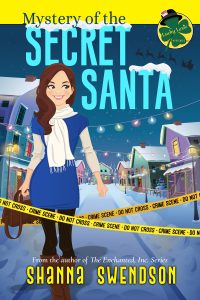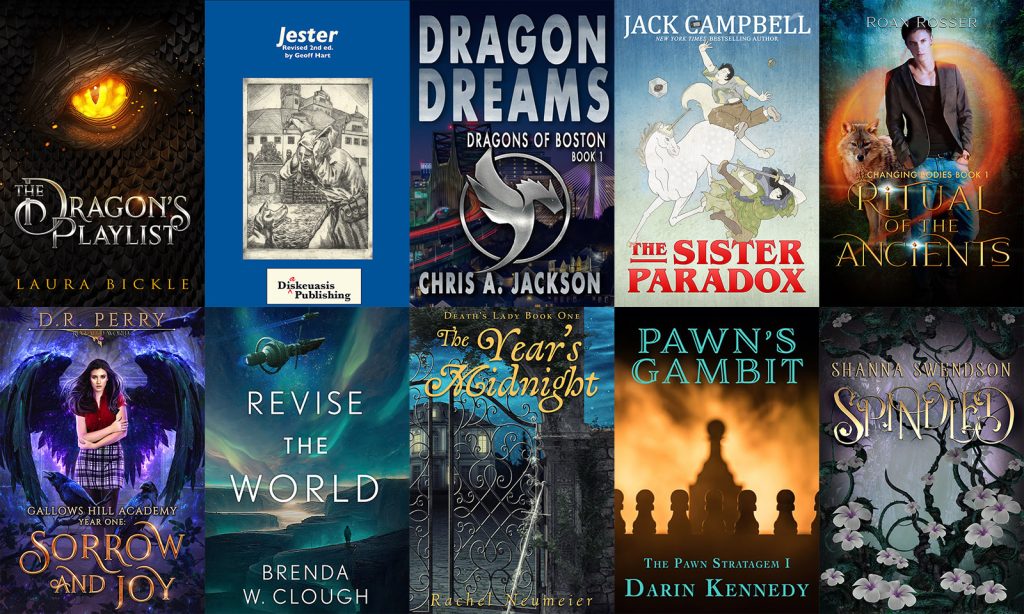I did check The Huntsman: Winter’s War out of the library, and I was surprised to find that it was much, much better than the first movie. It’s still high-budget Fantasy Cheese, but it was much better structured than the first movie.
As an aside, I figure I should define “Fantasy Cheese.” The quick and easy definition is “the sort of thing the Sci Fi Channel used to show on Saturday nights,” but then I had to think further to figure out what that meant. I think for me it boils down to underdeveloped fantasy that’s mostly a string of tropes. So, generic quasi-medieval European world with no development beyond that of what the society is like, the standard character and plot points without much to make them unique. In books, I’ve heard this referred to as “extruded fantasy product.” It was the sort of thing that got published a lot in the 70s and early 80s when people wanted more stuff like The Lord of the Rings, and so we got works that were essentially based on LOTR without any further development. I think it can be fun for movies since a lot of the nuance and development never makes it to the screen anyway, and there’s something satisfying about a favorite trope done well. A lot of these movies are low-budget, so there’s a bit of a camp factor to them. They’re kind of cheesy and predictable. These are fantasy movies not to be taken too seriously but that can be fun to watch.
But back to The Huntsman. The main thing for me was that the heroes had actual goals, both on the story level and the personal level. We knew what they wanted and why, and those things had emotional resonance. There was interpersonal conflict with emotional stakes. And the heroes got to be proactive rather than just reactive.
The way I define “proactive” is that the heroes are trying to do something other than just escape from or counter the villain. If all they do is respond to what the villain is doing, that’s reactive. If they have their own plan that they’d be carrying out regardless of what the villain is doing, that’s proactive. They’ll still have to deal with and react to the villain, but the villain is getting in the way of them doing something. In the first movie, Snow White was purely reactive up until the end. She was just trying to get away from the queen, so if the queen stopped chasing her, there would be no story. You have a proactive story if the heroes would still be doing something if the villain left them alone.
This movie is both a prequel and a sequel. There’s an extended prologue (maybe about 20-30 minutes of the movie) that gives some of the backstory of the queen from the first movie and her sister and how the sister becomes the Snow Queen (that’s the fairy tale this movie focuses on). Then it gets into the backstory of the Huntsman from the first movie and how he and his future wife were taken by the Snow Queen and trained to be part of her army of warriors, then goes on to show what happened to his wife and how he got to where he was in the first movie. And then it skips ahead to after the first movie, when the magic mirror has gone missing and Snow White’s husband asks for the Huntsman’s help to find it and get it to a safe place where the Snow Queen won’t be able to get to it. So he sets out on a quest, running into someone from his past along the way, and he learns that things in his past weren’t what they seemed.
There’s some humor and some decent action sequences that had an emotional core, so I didn’t zone out during them. Emily Blunt makes a wonderful villain, with a kind of fragile vulnerability beneath her icy exterior. I found myself actually caring what happened.
This one actually might work best if you don’t try to connect it to the first film because there are some continuity gaps, and this movie makes some of the pivotal stuff in the first movie an even bigger “huh?” There’s a bit of a Once Upon a Time (the TV series) thing, with the Huntsman from the Snow White story turning out to also be one of the kids from the Snow Queen story, and the Snow Queen and the Evil Queen from Snow White are sisters (in that series, it seemed like all the fairy tale characters were either related to each other or were mashups, with the same person playing key roles in multiple fairy tales).
In general, this is a good popcorn fantasy film with some good performances, gorgeous costumes, and a decent story. I don’t know that I’d buy the DVD unless I find it on the bargain shelf at the used bookstore, but it’s a fun watch. I think it’s currently available to watch with ads on Freevee (what used to be IMDB-TV).


